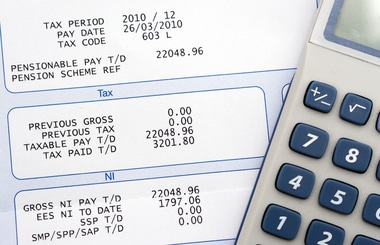
According to the IRS’ website, the Taxpayer First Act of 2019 “aims to broadly redesign” the IRS by expanding and strengthening taxpayer rights and making the agency more taxpayer friendly.
The legislation focuses on improving IRS information technology and making it easier for taxpayers to interact with the agency. Moreover, the act has three changes employers should know about.
1. Lowers the threshold for W-2, W-2c and 1099 filings
Currently, employers filing more than 250 Form W-2s or Form W-2cs must do so electronically through the Social Security Administration’s Business Services Online program. Employers filing fewer than that amount can file by paper.
Under the Taxpayer First Act, employers filing 100 or moreW-2s or W-2cs must do so electronically, starting in January 2021.
The threshold drops even lower in January 2022, requiring employers with 10 or more W-2s or W-2cs to file electronically.
The new thresholds apply to Form 1099 as well.
In particular, smaller businesses that used to file by paper should be aware of the threshold changes.
2. Internet portal for preparing, filing, distributing and maintaining 1099s
The Taxpayer First Act directs the IRS to create an internet portal that enables taxpayers to digitally file Form 1099s. The IRS has until Jan. 1, 2023 to launch the portal.
The platform must allow taxpayers — including employers with independent contractors — to:
- Prepare 1099s.
- File 1099s with the IRS.
- Distribute 1099s to recipients besides the IRS.
- Maintain a record of 1099s that were filed, completed and distributed.
The legislation requires the IRS to model the portal after the SSA’s platform that lets employers file Form W-2s.
3. Electronic signatures authorizing practitioner actions
Employers that use a payroll provider or a tax professional typically authorize the practitioner to make tax-related inquiries on their behalf or grant them power of attorney for tax-filing purposes.
The Taxpayer First Act mandates the IRS to publish guidance establishing standardized procedures for accepting a taxpayer’s electronic signature that’s intended to authorize disclosure to a practitioner or grant power of attorney to a practitioner. The IRS must publish this guidance no later than six months after the legislation’s enactment date.
In response to this requirement, the IRS issued Internal Revenue Manual (IRM) 10.10.1, IRS Electronic Signature Program,which took effect Dec. 3, 2019. The manual includes:
- Criteria for legally binding electronic signatures.
- Acceptable forms of electronic signatures.
- Approved e-signature methods and applicable IRS forms.
- Rules for identifying and authenticating the signer.
Employers, payroll providers and tax professionals should take note of any applicable changes in the manual.
If you have any questions about this information please contact BlueStone by clicking here.
©2020




